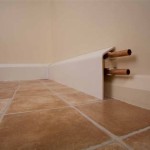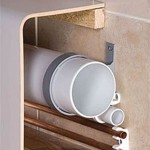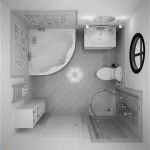Can You Paint Over Bathroom Tile?
Renovating a bathroom can be an expensive undertaking. If you are looking to refresh the look without breaking the bank, painting over existing bathroom tile may seem like an attractive option. While it is possible to paint over tile, it requires careful preparation and the right products for a successful and long-lasting finish. This article will examine the feasibility of painting bathroom tile, the steps involved, and the potential challenges you may encounter.
Do Your Research Before You Begin
Painting over bathroom tile is not a straightforward process like painting a wall. The surface of the tile is typically smooth and non-porous, making it difficult for paint to adhere properly. Therefore, thorough preparation is crucial for a successful outcome. Additionally, it is essential to consider the type of tile you have and the potential for mold or mildew growth in the bathroom environment.
Before you start painting, research the specific type of tile in your bathroom. Glazed tile, common in bathrooms, can be challenging to paint. The smooth, glassy surface may not readily accept paint. If you are unsure about the type of tile you have or the suitability for painting, consulting with a professional at a home improvement store or a contractor can provide valuable guidance.
Painting Over Bathroom Tile: A Detailed Guide
If you decide to proceed with painting your bathroom tile, follow these detailed steps for optimal results:
1. Clean the Tile Thoroughly
A clean surface is essential for paint adhesion. Start by thoroughly cleaning the tile with a degreaser to remove any soap residue, oils, or dirt. A mild bleach solution can also be used to kill any mold or mildew present. Rinse the tile thoroughly with clean water and allow it to dry completely.
2. Sand the Tile Surface
Once the tile is dry, lightly sand the surface with fine-grit sandpaper. This creates a rougher texture, providing better paint adherence. Use a sanding block or a sanding sponge to ensure even sanding across the tile. Be careful not to sand too aggressively, as this can damage the tile's surface.
3. Prime the Tile
Applying a primer specifically formulated for tile is crucial. It enhances paint adhesion and creates a more even surface for the paint to adhere to. Choose a primer that is compatible with the type of paint you plan to use. Apply the primer evenly using a roller or brush, ensuring complete coverage. Allow the primer to dry completely before proceeding to the next step.
4. Apply the Paint
Now you can apply the paint. Choose a paint specifically designed for bathroom use, as it will resist moisture and mildew. Use a high-quality brush or roller to apply the paint in thin, even coats. Allow each coat to dry completely before applying the next. Apply two to three coats of paint for maximum coverage and durability.
5. Seal the Paint
After the paint is dry, seal it with a sealant specifically designed for bathroom use. This will protect the paint from moisture and create a durable, waterproof finish. Allow the sealant to dry completely before using the bathroom. Apply the sealant according to the manufacturer's instructions.
Challenges and Considerations
Painting bathroom tile presents specific challenges that should be considered:
1. Adhesion
As mentioned earlier, the smooth, non-porous surface of glazed tile can make it challenging for paint to adhere properly. If the paint does not adhere well, it can chip or peel, ruining your hard work. The careful preparation steps outlined above are critical to address this challenge.
2. Moisture and Mildew
Bathrooms are prone to moisture and mildew. These factors can damage paint and cause it to deteriorate prematurely. It is crucial to use paint and sealant specifically formulated for bathroom use to combat these issues. Additionally, proper ventilation is essential to prevent moisture buildup.
3. Grout
The grout between the tiles can pose a challenge for painting. If the grout is in poor condition, it may need to be repaired or replaced before painting. It is difficult to paint grout effectively, and it may be best to leave it alone. You can, however, change the color of grout by using a grout pen.
While painting over bathroom tile can be a cost-effective way to refresh the look of your bathroom, it is essential to approach the project with careful consideration and proper preparation. Follow the steps outlined above, understand the potential challenges, and use the right products for the job.

How To Paint Over Tile Average But Inspired

How To Paint Over Tile Average But Inspired

Can You Paint Bathroom Tile The Family Handyman

How To Refinish Outdated Tile Yes I Painted My Shower Domestic Imperfection Diy Home Improvement Bathroom

How To Paint Tile Floor Angela Marie Made

Can You Paint Tiles Up Cycle With B Q Vaslper Review

How To Paint Over Ceramic Tiles In A Bathroom

How To Paint A Tile Floor Artsy Rule
Is It A Good Idea To Paint Old Bathroom Tiles With Water Resistant What Preparation Needed For The And Walls Quora

Can You Paint Bathroom Tile Yes But It S Complicated Taskrabbit
Related Posts







